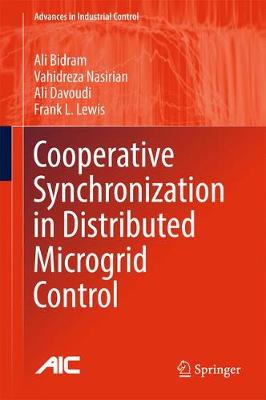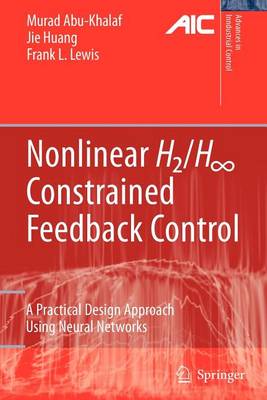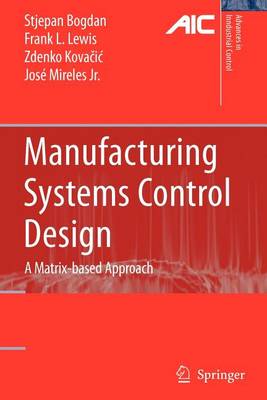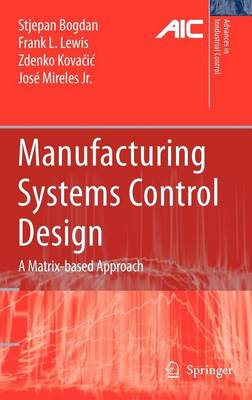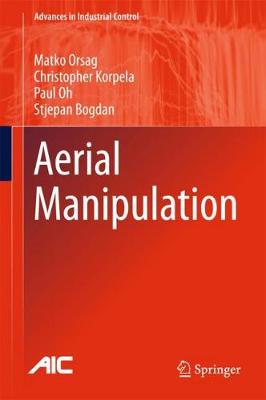Advances in Industrial Control
6 total works
Cooperative Synchronization in Distributed Microgrid Control
by Ali Bidram, Vahidreza Nasirian, Ali Davoudi, and Frank L. Lewis
This book brings together emerging objectives and paradigms in the control of both AC and DC microgrids; further, it facilitates the integration of renewable-energy and distribution systems through localization of generation, storage and consumption. The control objectives in a microgrid are addressed through the hierarchical control structure.
After providing a comprehensive survey on the state of the art in microgrid control, the book goes on to address the most recent control schemes for both AC and DC microgrids, which are based on the distributed cooperative control of multi-agent systems. The cooperative control structure discussed distributes the co-ordination and optimization tasks across all distributed generators. This does away with the need for a central controller, and the control system will not collapse in response to the outage of a single unit. This avoids adverse effects on system flexibility and configurability, as well as the reliability concerns in connection with single points of failure that arise in traditional, centralized microgrid control schemes.Rigorous proofs develop each control methodology covered in the book, and simulation examples are provided to justify all of the proposed algorithms. Given its extensive yet self-contained content, the book offers a comprehensive source of information for graduate students, academic researchers, and practicing engineers working in the field of microgrid control and optimization.
Nonlinear H2/H-Infinity Constrained Feedback Control: A Practical Design Approach Using Neural Networks
by Murad Abu-Khalaf, Jie Huang, and Frank L. Lewis
Nonlinear H2/H-Infinity Constrained Feedback Control
by Murad Abu-Khalaf, Jie Huang, and Frank L. Lewis
This book provides techniques to produce robust, stable and useable solutions to problems of H-infinity and H2 control in high-performance, non-linear systems for the first time. The book is of importance to control designers working in a variety of industrial systems. Case studies are given and the design of nonlinear control systems of the same caliber as those obtained in recent years using linear optimal and bounded-norm designs is explained.
Manufacturing Systems Control Design
by Stjepan Bogdan, Frank L. Lewis, and Zdenko Kovacic
This book covers all the steps from identification of operations and resources to the transformation of virtual models into real-world algorithms. The matrix-based approach presented here is a solution to the real-time application of control in discrete event systems and flexible manufacturing systems (FMS), and offers a sound practical basis for the design of controllers for manufacturing systems.
Manufacturing Systems Control Design: A Matrix-Based Approach
by Stjepan Bogdan, Zdenko Kovacic, Frank L. Lewis, and Jos Mireles
Aerial Manipulation
by Matko Orsag, Christopher Korpela, Paul Oh, and Stjepan Bogdan
This text is a thorough treatment of the rapidly growing area of aerial manipulation. It details all the design steps required for the modeling and control of unmanned aerial vehicles (UAV) equipped with robotic manipulators. Starting with the physical basics of rigid-body kinematics, the book gives an in-depth presentation of local and global coordinates, together with the representation of orientation and motion in fixed- and moving-coordinate systems. Coverage of the kinematics and dynamics of unmanned aerial vehicles is developed in a succession of popular UAV configurations for multirotor systems. Such an arrangement, supported by frequent examples and end-of-chapter exercises, leads the reader from simple to more complex UAV configurations. Propulsion-system aerodynamics, essential in UAV design, is analyzed through blade-element and momentum theories, analysis which is followed by a description of drag and ground-aerodynamic effects.
The central part of the book is dedicated to aerial-manipulator kinematics, dynamics, and control. Based on foundations laid in the opening chapters, this portion of the book is a structured presentation of Newton-Euler dynamic modeling that results in forward and backward equations in both fixed- and moving-coordinate systems. The Lagrange-Euler approach is applied to expand the model further, providing formalisms to model the variable moment of inertia later used to analyze the dynamics of aerial manipulators in contact with the environment. Using knowledge from sensor data, insights are presented into the ways in which linear, robust, and adaptive control techniques can be applied in aerial manipulation so as to tackle the real-world problems faced by scholars and engineers in the design and implementation of aerial robotics systems. The book is completed by path and trajectory planning with vision-based examples for tracking and manipulation.
